St. Swithin was Archbishop of Winchester, England during the ninth century and his nominal Day falls on July 15th, when, according to local folklore, the weather for the following 40 days is determined: if it rains on St. Swithin's Day, it will rain for 40 days, but if it is fair, the weather will be dry. The background to this piece of homespun wisdom is more religious than meteorological, but nonetheless, it does resonate with several aspects of parasite epidemiology, which are in-part weather-related. Mid-summer is a good time to assess the current status and potential risk/impact of endemic parasites on livestock farms, irrespective of whether strategic approaches to control have been implemented around turnout or not (Forbes, 2019). This article highlights what can be done in the way of parasite monitoring and management on cattle farms at this time of year, when there may be a short interval between busy times spent on activities like silage-making and harvest. It can also mark the approximate half-way point between turnout and housing and thus an important time to assess progress during the grazing season.
Seasonal aspects of epidemiology in cattle parasites
Protozoa
The presence of enteric protozoan parasites in youngstock is largely determined by their age and month of birth, thus cryptosporidia typically only affect neonatal calves, while coccidiosis normally affects cattle up to 6 months of age, although one species, Eimeria alabamensis, can affect older cattle at grass, but usually soon after turnout (Marshall et al, 1998). The seasonal pattern of these infections relates to calving, so for example in spring-calving herds, there is a risk of coccidiosis in calves in mid-summer when they are a few months old.
In contrast, babesiosis (redwater), caused by Babesia divergens, rarely infects stock less than ~6 months of age, during which time they can acquire an immunity that protects them subsequently. Disease is mainly seen in naïve, older cattle that have not previously been exposed to infected ticks (Ixodes ricinus). Ticks can be found on cattle on most months of the year, but population peaks classically occur in spring and autumn in most parts of the British Isles and Ireland (MacLeod, 1939; Gray, 1982). Redwater cases typically peak in May with a secondary peak in the autumn (Gray, 1980), but disease can be diagnosed through much of the year, other than in mid-winter (Donnelly and MacKellar, 1970; Johnson et al, 2020).
Helminths
The classical pattern of infective larval (L3) populations of gastrointestinal nematodes (GIN) (Cooperia oncophora and Ostertagia ostertagi) on pasture in set-stocked fields (Figure 1) was determined in autumn/winter born, weaned calves from the dairy herd (Armour et al, 1979, Michel, 1969). The increase in numbers of L3 is a function of the initial ingestion of over-wintered larvae from turnout onwards, acquisition of patent infections followed by re-contamination of pasture with worm eggs that develop into L3 in a temperature-dependent manner. There are some variations in the timing and magnitude of the patterns of larval numbers, these are associated with latitude, weather and stock management (Rose, 1970), but the stereotypy is common on pastures that are set-stocked with young cattle in north-eastern Europe. Given that populations of over-wintered larvae decline rapidly in April and thereafter, most of the larvae on pasture by mid-July are derived from patent infections in grazing cattle. The same principles apply in stock of all ages, but quantitatively, the biggest contributors of fertile nematode eggs to the herbage via their dung during the first few months after turnout are naïve, first-grazing season calves.
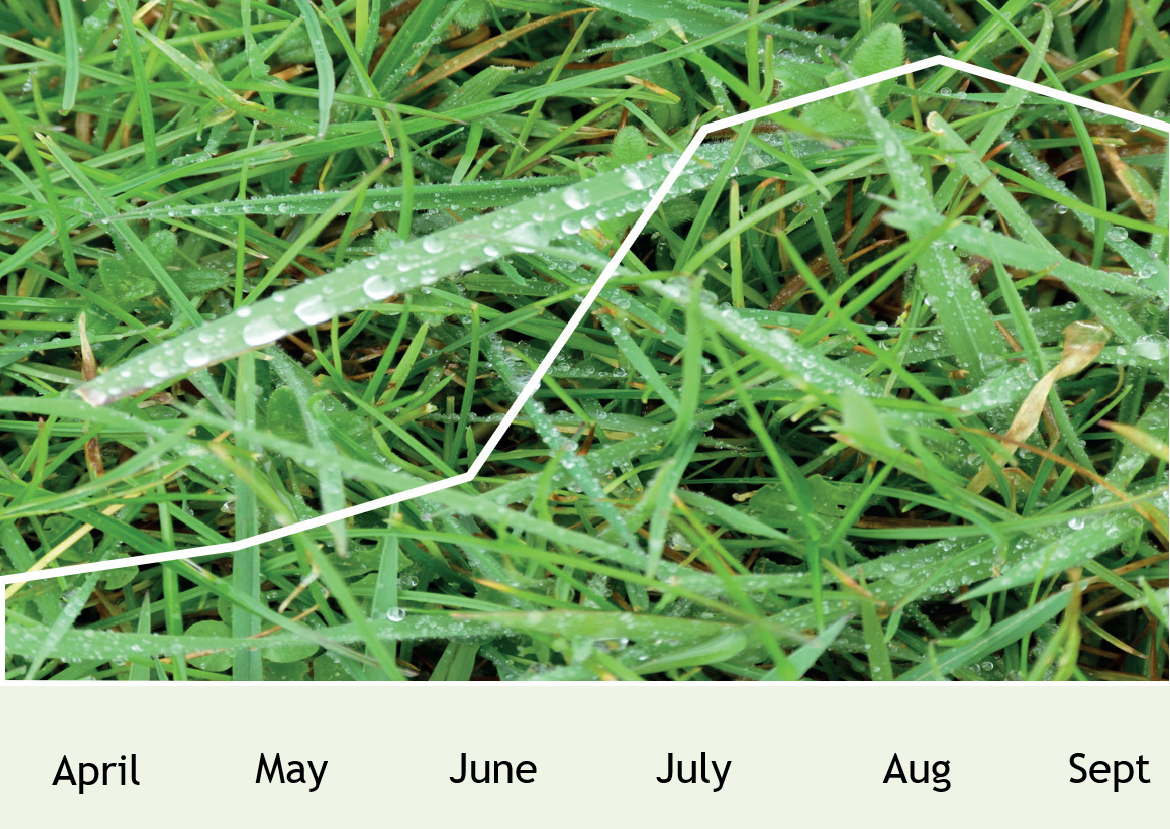
Famously, the epidemiology of lungworm (Dictyocaulus viviparus) is less predictable compared with that of GIN (Jorgensen, 1980) and disease can occur when immunologically naïve cattle (of any age) are exposed to L3 on pasture, even at turnout or on aftermaths (Armour et al, 1980). Nonetheless, dictyocaulosis (husk/hoose) is more commonly seen in the second half of the grazing season and this may in part be a result of the augmentation of larval populations on pasture (Figure 2), derived from over-winter survival on pasture and/or carrier cows, followed by autoinfection.
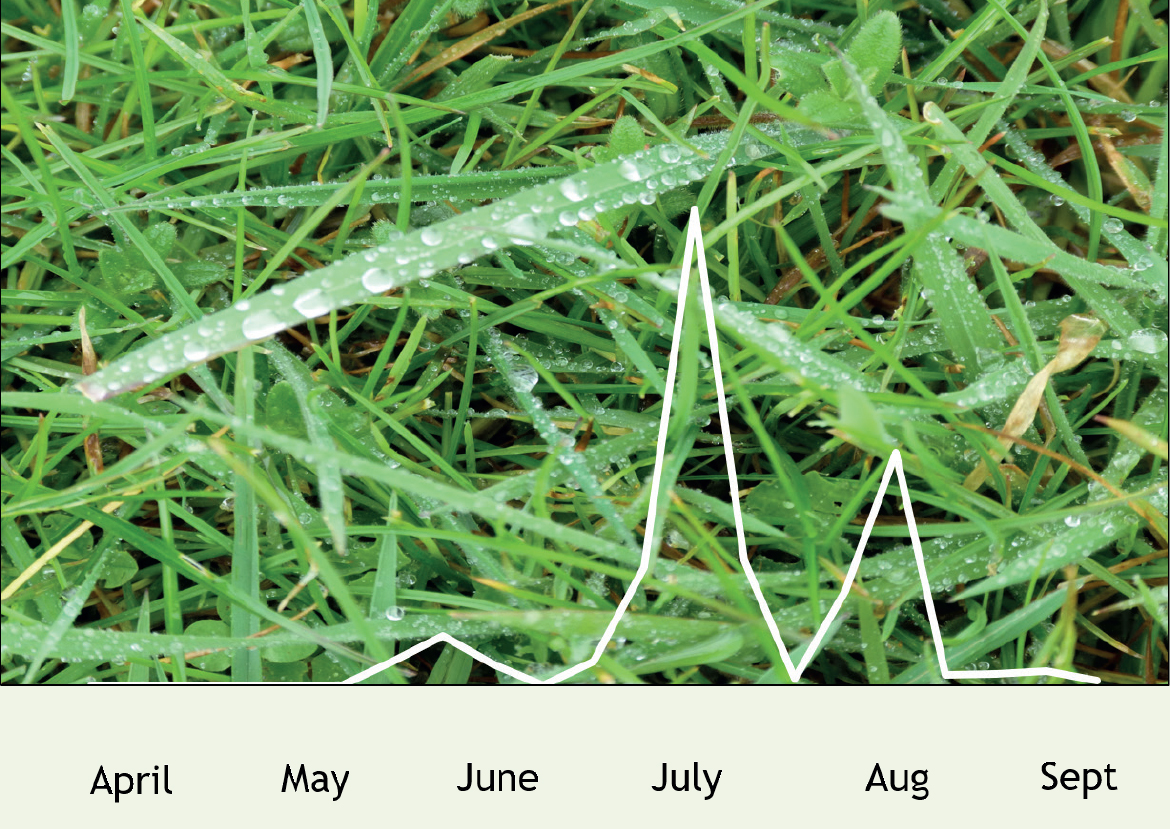
Although Figures 1 and 2 do not have the same vertical axes, in parasitic gastroenteritis (PGE), larval populations on permanent, grazed pastures typically do not decline to baseline levels; there are usually residual populations of 50–200 L3/kg herbage dry matter (DM) even at the nadirs. In contrast, the numbers of larval lungworm show peaks interspersed with troughs, during which larvae cannot be detected. Burdens that cause clinical disease are of the order ≥1000 lungworm (Jarrett et al, 1954) and ≥50 000 O. ostertagi (Anderson et al, 1965), which explains why comparatively low pasture larval counts may still lead to outbreaks of husk.
The epidemiology of liver fluke (Fasciola hepatica) and rumen fluke (Calicophoron daubneyi) is inextricably linked with their shared intermediate host, the mud snail Galba truncatula. Snail biology is moisture-dependent within its operating temperature range of 10–30oC. June is a particularly important month in the annual cycle of fasciolosis in the British Isles and Ireland as it is when conditions for expansion of snail populations are optimal, subject to sufficient rainfall (Ollerenshaw, 1971), hence the incorporation of June rainfall in most forecasting models. Thus by mid-July it may be possible to provisionally estimate the magnitude of the risk for fluke disease in the following autumn and winter: 18 days with >1 mm rain from 1st June to 15th July indicate high risk (Ross, 1970).
External parasites (Table 1)
Table 1. Common arthropod parasites of grazing cattle that are vectors of disease.
| Species | Common name | Vector of Infections | Disease |
|---|---|---|---|
| Ixodes ricinus | Sheep tick | Louping-ill virusAnaplasma phagocytophilumBabesia divergens | Louping-illTick-borne-feverRedwater |
| Musca autumnalis | Face fly | Moraxella bovisThelazia spp.Parafilaria bovicola | Infectious bovine keratoconjunctivitis (pink-eye)Parasitic conjunctivitisParafilariosis |
| Hydrotaea irritans | Head fly | Arcanobacterium pyogenes | Summer mastitis |
| Culicoides spp. | Midges | Blue-tongue virusSchmallenberg virus | Blue-tongueAbortion |
The seasonality of tick questing is mainly during spring and autumn and, particularly if the summer is dry, fewer ticks would be expected to be found on cattle in mid-July and hence the risk of tick-borne-disease would be less then.
The main external parasites likely to be present on cattle in mid-summer are midges, and nuisance and biting flies (Forbes, 2017a), but apart from causing behavioural changes as the animals try to avoid the irritation, the importance of flies is primarily as vectors of other diseases, notably summer mastitis and pink-eye (infectious bovine keratoconjunctivitis).
Mid-July review
Performance
In young, weaned stock, the most informative measure of performance is growth rate. Generally average daily gains of 0.7–0.8 kg/day or more indicate adequate nutrition and few negative effects of disease or subclinical infections, including PGE (Hoglund et al, 2009). Growth rates of this order are sufficient to meet targets for animals destined for beef production or replacement heifers.
Milk yield (and composition) are useful measures in the dairy herd, but can be affected by a multitude of factors, so the influence of parasites can only be assessed by further testing. In the spring-calving beef herd, calf growth rate is a useful surrogate for the dam's milk yield as milk is the main driver for growth in calves, particularly in the first 3–6 months (Boggs et al, 1980).
Faecal sampling
Although faecal (nematode) egg counts (FEC) have a number of important limitations in cattle that can lead to misdiagnoses (Forbes, 2017b), in youngstock in their first grazing season they have a prognostic value when measured around 2 months after turnout (Shaw et al, 1998). If the group mean FEC at this time is ≥200 eggs per gram (EPG), then there is a high risk of clinical PGE in the second half of the grazing season if no preventative actions are undertaken.
Most diagnostic laboratories will also check for coccidial oocysts when doing FECs and this can be useful, although the relationships between oocyst counts, disease and performance are too inconsistent to be relied on as the sole determinant for action.
Examination of faeces for lungworm larvae can also be helpful in assessing the current infection status of grazing cattle and the magnitude of pasture contamination, but populations of D. viviparus in cattle or on pasture vary quite haphazardly so the results of sampling can be somewhat serendipitous.
At this time of year, the number of fluke eggs is of most value in determining the level of pasture contamination and hence the likelihood of snails becoming infected, which in turn predicts the risk and magnitude of infections being acquired by stock later in the year.
Actions
Depending on the results of monitoring since turnout and the outcome of the review, the possible actions that can be instigated around mid-July essentially revolve around pasture management or parasiticide treatment or both.
Pasture management
Most of the studies conducted on PGE have been conducted with weaned calves, set-stocked on pasture and, if this is the case, then a move to a low-risk pasture (silage aftermath, new-seeds, fields not grazed by cattle for at least 9 months previously) in mid-July is warranted (Figure 3). If FECs have been conducted before any moves, then the potential for contaminating the new pasture can be estimated. Cattle can be treated at the same time as the move to avoid immediately contaminating the new pasture with worm eggs, should counts be high (Michel and Lancaster, 1970), though this practice has become somewhat controversial. However any real or perceived risks can largely be mitigated through the treatment regimen and/or subsequent management of the pasture (Forbes, 2021a).
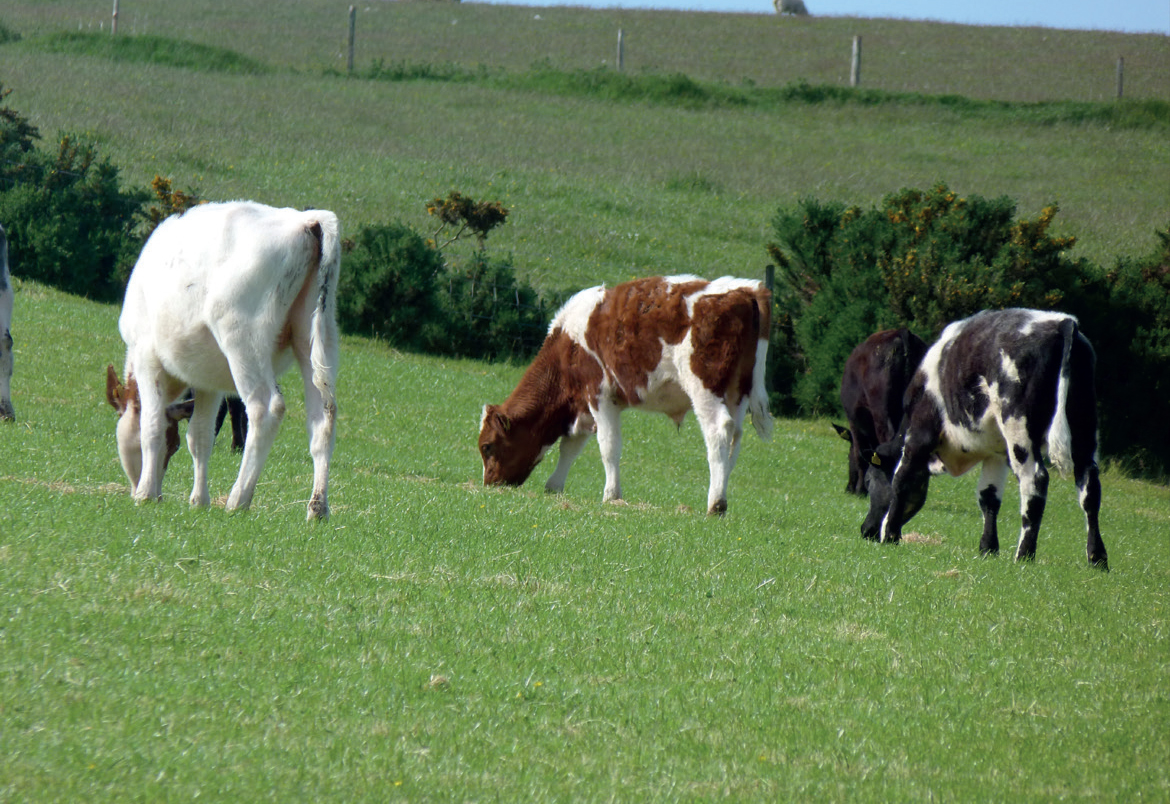
Dose-and-move has been shown to effectively control lungworm too (Eysker et al, 1995), but in unvaccinated cattle the mantra for D. viviparus control is daily monitoring for clinical signs throughout the grazing season.
Where rotational grazing is practised from turnout onwards, the risk of PGE by mid-July is essentially a function of the parasite status of cattle that have previously grazed the paddocks/strips, the duration of residence and the interval between successive grazings. If by July, the cattle have yet to graze or re-graze the paddocks in the rotation that year, then the risks of clinical PGE and potentially other helminth parasitism should be low, for example in ultra-high stocking density/short duration systems like ‘mob grazing’ (Savory, 1983) (Figure 4). Whatever the grazing regimen is, weighing and FEC can be used to confirm the status of the youngstock and whether any interventions need to be considered.
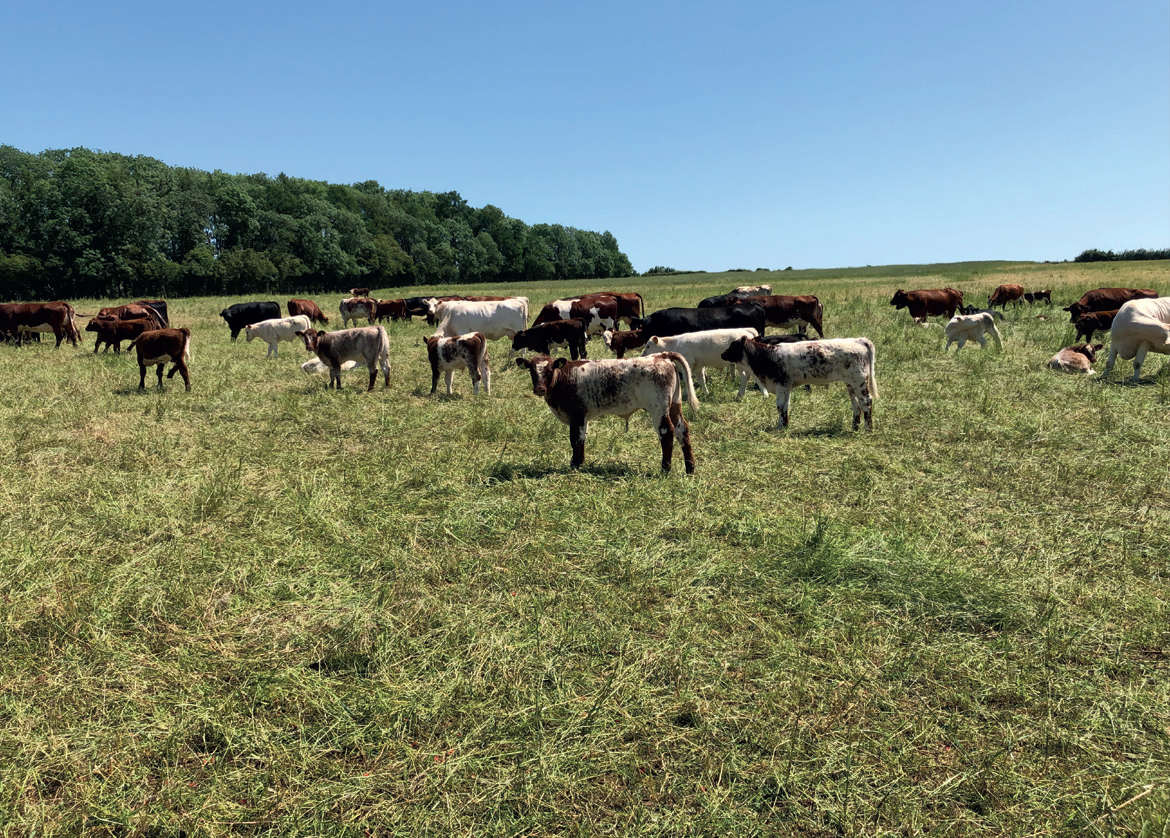
If data are available for fluke eggs in the dung, then the infection status of cattle in mid-July can be evaluated. The prepatent period for F.hepatica is ~12 weeks, so if cattle were turned out ~3 months previously, then even first grazing season cattle could have patent infections if they ingested sufficient over-wintered metacercariae at turnout. Particularly if the weather is dry, transmission of infection from the snail to the herbage and thence to cattle should be limited, but it may still be beneficial to move cattle to fields that lack the damp habitats that the mud snails require.
Opportunities for pasture management to control flies are limited (Figure 5), but if young cattle, maiden heifers and dry cows can be kept in fields that are not surrounded by hedges or woodland, then populations of nuisance flies should be lower and the risks of pink-eye and summer mastitis reduced.
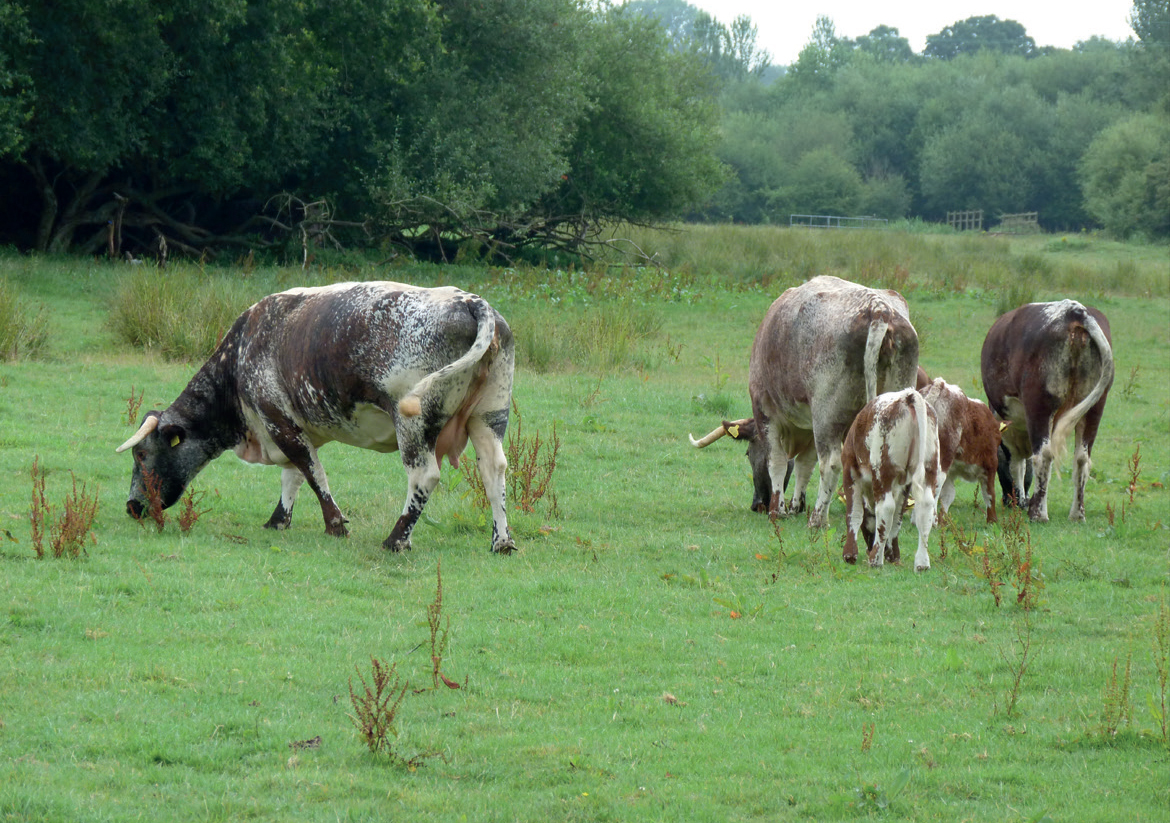
Medication
If pasture management is not a practical option or is considered not to provide sufficient control on its own, then anthelmintics can be used to reduce nematode burdens in grazing cattle in July. The objectives are twofold: to remove negative effects of the parasites in the host and to reduce pasture contamination with worm eggs and subsequently larvae.
While it is common practice to treat whole groups of at-risk cattle, there is now a useful body of evidence to support treating only those individuals in which treatment will have the most benefit, so called targeted selective treatment (TST). Optimum outcomes are seen when daily live weight gain (DLWG) is used as the main parameter to indicate the need for treatment in young cattle with PGE (Hoglund et al, 2013; Berk et al, 2017; Jackson et al, 2017), but 2–3 months after turnout, FECs are also informative and can be used in conjunction with growth rate.
Depending on the circumstances, sometimes a single anthelmintic treatment in mid-July is sufficient to control PGE and maintain performance for the remainder of the grazing season (Merlin et al, 2018), but in some cases, repeat treatments are beneficial, particularly if animals remain on the same pasture throughout the year (Steffan and Nansen, 1990).
All the anthelmintics used to control PGE are also effective against D. viviparus, so any treatments given in July will remove lungworm too, with potential benefits to the cattle and in limiting faecal larval output.
If older cattle are chronically infected with liver fluke and have not been treated during housing, there may be gains to be seen from flukicide treatment in mid-summer. This will also cause a cessation of fluke egg output in the dung for 1–3 months, depending on the product used, which can be useful epidemiologically, particularly during periods when G. truncatula populations are high.
In the UK, product choice for the control of flies (and ticks) is limited essentially to the pyrethroids and to have an effect on local fly populations, whole group treatments are normally indicated. However there is some evidence to support a TST approach for the control of the haematophagous horn fly, Haematobia irritans with insecticidal ear-tags (Miraballes et al, 2018), and it would be interesting to know if this approach would work in the control of nuisance flies.
KEY POINTS
- Mid-summer is a valuable time to assess the status of cattle at grass and the relative risk of parasitism over the second half of the grazing season.
- In youngstock, daily live weight gain and faecal egg counts measured 2 months after turnout are useful prognostic indicators for parasitic gastroenteritis.
- In favourable (wet) conditions in June and July, mud snails thrive and populations expand, so limiting fluke egg output in cattle at this time can limit infection of snails and subsequent transmission of Fasciola hepatica to cattle.
- Moving stock away from fields surrounded by hedges or woods can reduce the risk of exposure to flies and consequently summer mastitis and pink-eye.
- If parasiticide treatments are indicated, targeted group or individual therapy can both yield good results in appropriate circumstances.
- Parasite control requires active engagement by veterinary surgeons with their farmer clients, in order that they can utilise their collective local knowledge to monitor parasites and to implement actions that are consistent with optimum animal health and performance.
Conclusions
In this short article it is only possible to provide some pointers and highlights to actions that could be undertaken around St Swithin's Day on cattle farms, and which can help in the annual cycle of parasite control. Clinicians can extend, expand and customise their approaches to parasite control according to the topography of their clients’ farms, their management and the farmers’ targets and aspirations (Forbes, 2021b). Parasite control is not a passive process and livestock owners should be prepared to invest time and money to ensure that they can monitor, sample, weigh, handle and treat, if necessary, their cattle at grass so that their animals can thrive without suffering the ill-effects of parasitism.


